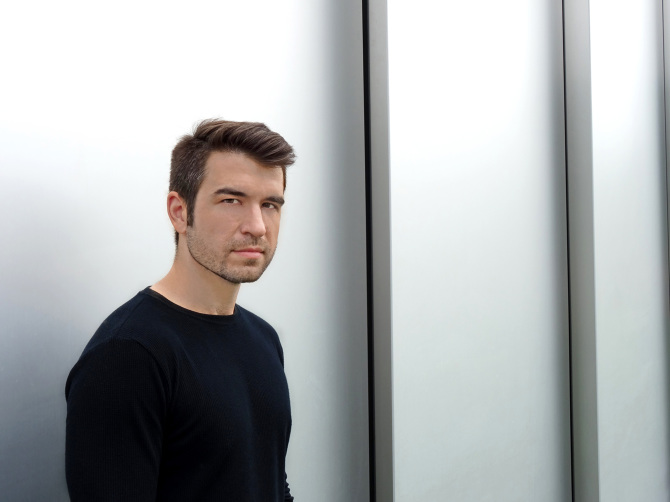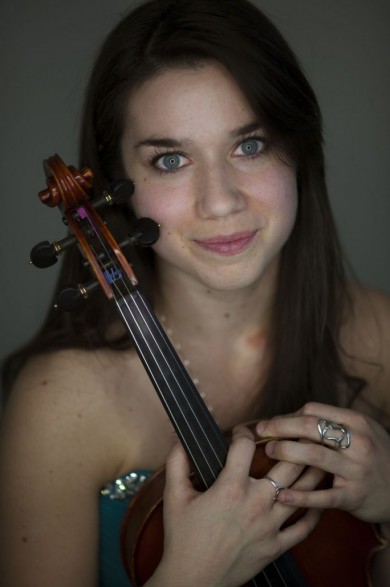New World’s “New Work” program offers powerful moments

John Supko’s “broken on the wheel of night” was given its world premire at the New World Symphony concert Saturday night.
The program notes for New World Symphony’s concert of world premieres Saturday night appeared to promise an evening of contrived, over-thought works.
The composer John Supko “explores intersections of chance and intention; conventional music notation and real-time score generation; sound and spoken text; installation and performance; human and computer creativity.” The poet Roger Reeves says his short play JOAN, or The Light Came in the Name of the Voices, “grapples with the unspeakable, the intersection of American history, family, the incongruous and fraught relationship between American historical present and its future.”
Could such intellectualized, agenda-driven approaches to composition produce works of any artistic power? The answer turned out, for the most part, to be yes.
Supko’s broken on the wheel of night for solo viola and electronics was inspired, the composer tells us in a program note, by the story of the painter Giotto painting a perfect circle, a quotation from Alexander Pope, a Latin palindrome and the poet William Bronk. Yet for all its varied inspirations and the brainpower evident in the aural logic of its composition, the work had a visceral force that’s absent from many cerebral pieces.
For this work, commissioned by New World, the only one on stage at New World Center in Miami Beach was the violist Caroline Gilbert, a New World member. As she played the opening, which consisted of two simultaneous notes repeated in various rhythms, the rumbling sound of the electronics joined in.
There was a methodical rigor to the way the viola and electronics fed off each other, drawing energy from each other’s rhythms and motifs. The tones became more complex, as Gilbert drew spiky sounds from her instrument and the electronics became more pointed. Toward the end, the mood brightened and relaxed, with Gilbert’s viola producing lyrical tones against a warmer electronic background.
There wasn’t much music in Reeves’ JOAN, or The Light Came in the Name of the Voices. Also commissioned by New World, the brief play portrays a time in the not-too-distant future when the police killing of a black youth for walking on the road rather than the sidewalk sets of riots that threaten to engulf an entire society.
Priscilla Rinehart portrays the boy’s mother, Joan. Reeves himself portrays a police interrogator, attempting to get her to help stop the violence. Starting out in control, the interrogator loses his self-assurance as he learns that his own son has been sucked into the chaos. The music comes in as Joan is counseled by the “voices” of other people, portrayed by violin, harp, oboe, tuba and bass, in brief riffs composed by Michael Linville, New World’s dean of chamber music and fellow development. Although the work does not avoid justifiable anger at police shootings, it focuses on the tragedy of sons being caught up in violence, with a particularly vivid image of desperate fathers handcuffing their sons in basements to prevent them from being dragged in.
Oscar Bettison, a British composer now on the faculty of the Peabody Institute of Baltimore, appears consciously out to creep out the audience with his “Lights in Ashes.” A section of his 2005 work called O Death, it was rewritten for small orchestra and given its world premiere Saturday, in a performance conducted by New World fellow Dean Whiteside.
Bettison is a master of eerie orchestration, using spare materials–a hint of percussion, soft brass instruments, a solo violin, and ascending two-note motifs–to create an atmosphere of mystery and menace. As the music progresses, he suddenly has a percussionist strike a fortissimo hammer blow accompanied by an abrupt blast of brass, causing audience members to visibly jump in their seats.
New World’s founder and artistic director Michael Tilson Thomas took the stage to conduct the final work, Inverno In-ver by the late Italian composer Niccolò Castiglioni. Although the music itself is more than 40 years old, a stage production to accompany it was given its world premiere Saturday.
“Inverno” is the Italian word for winter, and the work portrays the season with a series of brief, picturesque movements. Like a 20th century Vivaldi, Castiglioni uses brittle textures and the instruments’ upper registers—wispy violin notes, the tinkling top range of the piano–to evoke a time of snow, ice and wind. Tilson Thomas conceived the stage production, co-choreographed by Patricia Birch and Benjamin Holliday Wardell.
Wardell, clad in an ice-blue bodysuit, served as an agile, fast-moving spirit of winter, bearing glowing ice balls and cavorting in the snow in video scenes with the dancer Stephanie Fuentes. The New World Symphony’s attempts to add visual elements to music have had mixed results at best, with the video or stage action often too weak to stand with the music, serving as a distraction rather than an enhancement.
That was not the case here. For the most part, the dream-like stage action worked, possibly because in its vivid portrait winter as an enchanted world with hints of mystery and danger, the music feels like background music to accompany something happening. The stage action also required members of the orchestra to participate, waving silvery cloths, refusing Wardell’s offering of glittering iceball and trying to dance, an activity probably best left to the pros. But in general, this was an effective enhancement to a vivid musical portrait.
Posted in Performances, Uncategorized
Leave a Comment
Sun Apr 30, 2017
at 11:45 am
No Comments







